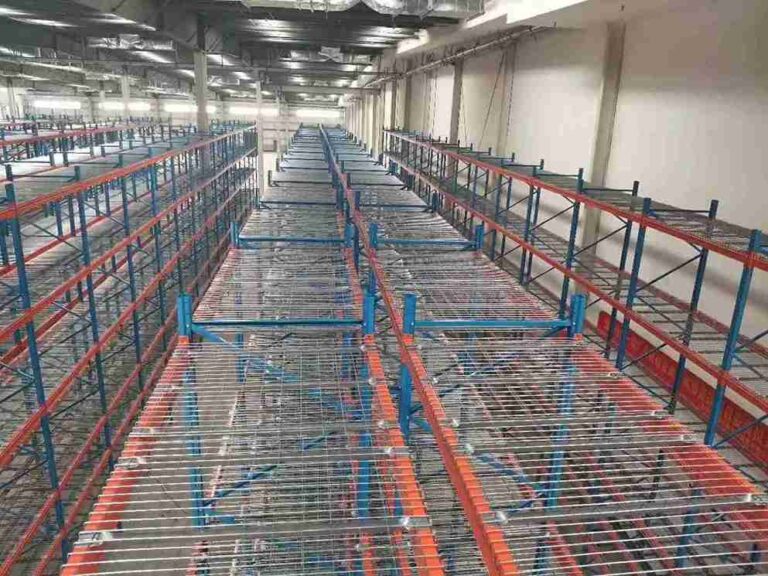📐 "First 50 Enterprise Queries Get Custom 3D Warehouse Design" Plan

Introduction
A well-executed pallet racking installation guide is essential for businesses looking to optimize warehouse space while ensuring structural integrity and safety. Whether setting up a new storage system or reorganizing an existing facility, this comprehensive pallet racking installation guide provides expert-level insights to help users avoid costly mistakes and maximize efficiency.
From selecting the right racking system to anchoring it securely, this pallet racking installation guide covers every critical step in detail. By following these instructions, warehouse managers, logistics professionals, and DIY enthusiasts can confidently install pallet racking systems that meet industry standards and withstand heavy loads.

1. Understanding Pallet Racking Systems Before Installation
Before diving into the pallet racking installation guide, it’s crucial to understand the different types of racking and their components.
1.1 Types of Pallet Racking Systems
- Selective Pallet Racking – The most common system, allowing direct access to each pallet. Ideal for warehouses with high SKU variety.
- Drive-In/Drive-Through Racking – Best for high-density storage, supporting FIFO (First-In-First-Out) or LIFO (Last-In-First-Out) inventory systems.
- Push-Back Racking – Uses a cart system to maximize storage depth while maintaining accessibility.
- Cantilever Racking – Designed for long, bulky items like lumber, pipes, or furniture.
1.2 Essential Components of a Pallet Racking System
Every pallet racking installation guide must account for these key parts:
- Uprights (Frames) – Vertical steel columns that form the backbone of the system.
- Beams – Horizontal supports that hold pallets in place.
- Wire Decking or Plywood – Optional but recommended for added stability and safety.
- Shims & Anchors – Critical for leveling and securing the racking to the floor.
2. Pre-Installation Planning: The Foundation of a Successful Setup
A pallet racking installation guide is only as good as its planning phase. Skipping this step can lead to inefficiencies or even structural failures.
2.1 Measuring Warehouse Space for Optimal Layout
- Aisle Width – Standard forklifts require at least 5 feet of clearance, while narrow-aisle forklifts need 3.5 feet.
- Ceiling Height – Must accommodate the tallest rack level while allowing safe forklift operation.
- Floor Load Capacity – Concrete floors should have a minimum 2,500 PSI rating to support heavy-duty racking.
2.2 Obtaining Necessary Permits & Compliance Checks
- Some municipalities require warehouse racking permits for installations exceeding 8 feet in height.
- Compliance with OSHA and RMI (Rack Manufacturers Institute) standards is mandatory for workplace safety.
2.3 Gathering the Right Tools & Safety Equipment
A proper pallet racking installation guide should list essential tools:
- Tape measure & laser level – For precise alignment.
- Hammer drill & concrete anchors – For securing uprights.
- Impact wrench & torque wrench – For tightening bolts to manufacturer specifications.
- Safety gear – Hard hats, gloves, and harnesses for high installations.
3. Step-by-Step Pallet Racking Installation Process
This pallet racking installation guide breaks down the assembly into manageable steps to ensure accuracy and safety.
3.1 Step 1: Marking Upright Positions for Proper Spacing
- Use chalk lines or laser levels to mark where uprights will be placed.
- Ensure consistent spacing (typically 8 to 12 feet apart) for balanced weight distribution.
3.2 Step 2: Assembling Upright Frames Correctly
- Bolt base plates to the upright columns.
- Use shims to compensate for uneven flooring before anchoring.
3.3 Step 3: Installing Cross Beams Securely
- Start from the bottom beam and work upward.
- Ensure locking pins or bolts are fully engaged to prevent dislodging.
3.4 Step 4: Anchoring the Racking System for Stability
- Drill concrete holes using a hammer drill.
- Insert expansion anchors and tighten to recommended torque values.
3.5 Step 5: Adding Decking for Enhanced Safety (Optional)
- Wire mesh decks prevent small items from falling.
- Plywood decks provide a solid surface for uneven loads.
4. Safety Checks & Compliance: Ensuring Long-Term Reliability
A pallet racking installation guide must emphasize post-installation inspections to prevent accidents.
4.1 Verifying Load Capacity & Weight Distribution
- Never exceed manufacturer-rated beam capacities (typically 2,000–5,000 lbs per pair).
- Distribute weight evenly to avoid rack tipping.
4.2 OSHA & RMI Compliance: Avoiding Costly Violations
- Uprights must be plumb within 1/8″ per 10 feet.
- Regular inspections should check for bent beams, loose anchors, or damaged components.
4.3 Routine Maintenance for Longevity
- Monthly visual checks for damage.
- Annual professional inspections for high-capacity systems.
5. Common Mistakes to Avoid During Installation
Even with a detailed pallet racking installation guide, errors can occur. Here’s what to watch for:
- Skipping Anchoring – Unsecured racks can collapse under load.
- Ignoring Load Limits – Overloading leads to catastrophic failures.
- Poor Aisle Planning – Narrow aisles increase forklift collision risks.
6. When to Hire a Professional Installer
While this pallet racking installation guide covers DIY setups, some scenarios require experts:
- High installations (over 20 feet)
- Seismic zone requirements
- Complex systems like drive-in or push-back racking
Conclusion
This pallet racking installation guide provides a comprehensive, step-by-step approach to setting up a safe and efficient storage system. By following these best practices, businesses can maximize warehouse space, improve workflow, and reduce safety risks.
For further optimization, explore our Warehouse Layout Design Guide and Forklift Safety Best Practices.
FAQs
1. How much weight can pallet racking hold?
Each beam pair has a specific load rating (usually 2,000–5,000 lbs). Always check manufacturer specifications.
2. Do I need a permit for pallet racking?
In many areas, racks over 8 feet tall require permits. Verify local regulations before installation.
3. Can I install pallet racking on uneven floors?
Yes, shims can level the base plates before anchoring.
4. How often should I inspect my pallet racks?
Perform monthly visual checks and annual professional inspections.
5. What’s the best racking for small warehouses?
Selective pallet racking offers the best balance of accessibility and space efficiency.




